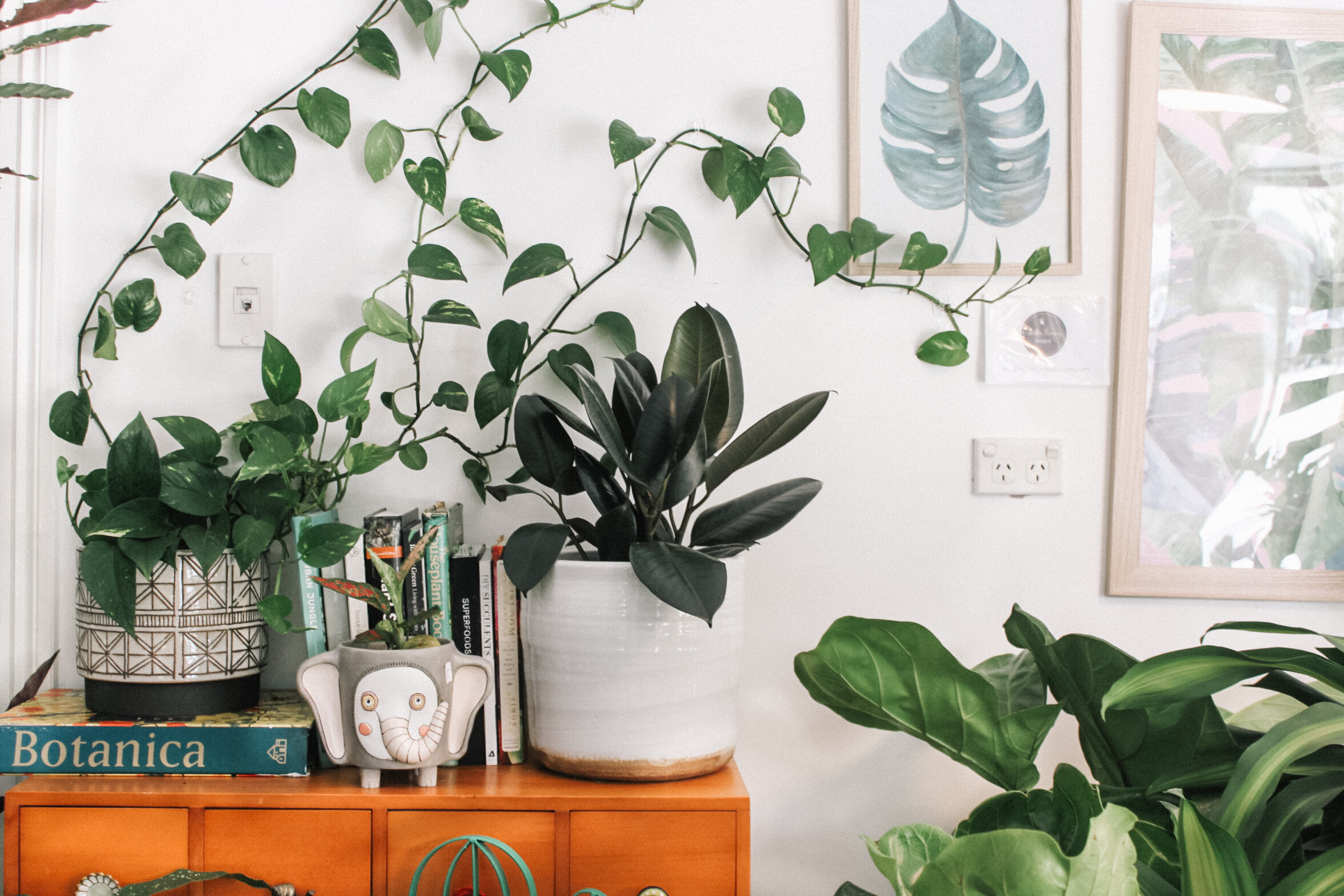Happy Earth Day: How to Move Plants Long Distance And Keep Them Alive
PAGE Magazine
By Lorena Romo
Moving long distance has a lot of moving pieces, but can one of those pieces be your garden? If you have a beloved monstera deliciosa or English rose garden that needs to be moved from point A to point B, we have some options for you and your green friends.
Is Moving Plants Long-Distance Possible?
It’s important to know that most moving truck and shipping container companies don’t allow the transport of plants. Many of these companies won’t move plants due to certain state laws and possible liability.
And don’t think about hiding your plants among your other belongings, either. Doing so could void your contract with the movers and would invalidate any protections if the plants cause a mess that damages your belongings.
That said, it may still be possible to move your plants across the country. You just have to really, really want it.
First, check state laws to see if you can bring your plants at all (seriously)
Moving plants across state lines can be a bit tricky.
States that rely heavily on agriculture – including California, Texas, and Florida – are very wary of allowing in any pests or invasive species of plants that could destroy crops. Several have strict regulations around bringing in plants from out of state. Unfortunately, the United States Department of Agriculture (USDA) even bans the transport of some plants altogether.
If you really want to get into the weeds (ha), you can check out the USDA’s full list of regulated plants within all 50 states and U.S. territories.
Because the rules for each state are different, you’ll need to research which states you’re traveling through and ensure that you don’t risk having your plants confiscated at border checkpoints. Some states allow you to bring in plants that exclusively exist indoors, but may require you to re-pot them with sterile soil before moving. Others may require a certificate of inspection, or have you quarantine your plants before bringing them home.
No proud plant parent wants to say goodbye to their collection, but that may be what you have to do. In that case, spend some time finding them a good home by donating them to friends and family, users on plantswap.org, or finding buyers on sites like Craigslist and Facebook Marketplace.
If you’re still committed (and legally able), pick how you want to transport your plants
Again, most moving companies don’t transport plants (but definitely ask ahead of time). You’re likely to have to use your own vehicle, whether it’s your personal car or a rental truck. Don’t forget your spray bottle of water!
Cars
It may go without saying, but don’t pack your plants away in some box. Instead, you should pack your plants so you can give them plenty of room and attention. Plants that are more fragile or sensitive to temperature should go in the front where there is access to A/C or heat and the driver can keep an eye on them. Other plants can be packed in the backseat and even secured with seat belts. (If you have a lot of plants, you may need to literally keep an inventory.)
If possible, don’t pack plants in the trunk, since the airflow is limited, and avoid open vehicles like the bed of a pickup truck (unless it’s covered) since the wind can damage plants in transit.
“Because the rules for each state are different, you’ll need to research which states you’re traveling through and ensure that you don’t risk having your plants confiscated.”
Rental trucks
For the same reason, it’s best to transport plants in the front cabin of a rental truck, due to sunlight and airflow concerns (especially since you’re probably driving a long way). Plus, remember that U-Haul, Penske, and Budget Truck Rental have cleaning fees if your plants leave a mess. (U-Haul’s says their cleaning fee is $25, while Budget simply claims a “reasonable fee“.)
It’s worth noting rental companies like U-Haul can lend you plastic moving bins for dirty and fragile things like plants. It’s an upsell if you don’t have your own plastic bin to use though. U-Haul claims their “Ready-To-Go” boxes begin at “12 boxes for a week (for) as low as $18”.
Can’t drive? Try the post office
That said, if it’s not possible to personally drive your plants to your new destination, you’re not out of luck.
The second best option when moving plants across the country, believe it or not, is to mail them. It’s not ideal, since you can’t directly control the care with which they’re handled, or allow them to get water and sunlight while in transport. That means you should choose a fast shipping option and prepare to pay a good chunk of change for it. And be sure your plants don’t arrive before you do! (Read more on how to mail plants below.)
Prep your plants for the move
Once you’ve nailed down the transportation method for your plants, you gotta prep them for moving.
Moving will undoubtedly be stressful for your plants. You want to make sure they’re in the best shape possible before you uproot them. Getting rid of any dead leaves or pests will ensure they’re happy and primed for growth when you get to your new home.
With that in mind, now let’s talk about how to best physically move your plants.Moving far away? Do it cheaper. HireAHelper.com can save up to 40%, compared to traditional interstate moving companies. Click here to learn how.
How To Move Your Plants and Garden
There are some special considerations for plants moving long distances.
It’s a good idea to water your plants well a couple of days before the move, not right before you pack them up. A soggy potted plant is heavy and could leak all over your belongings while in transit. Not to mention, overwatering can lead to root rot and other problems. Make sure your plants are well hydrated ahead of time and that the soil is just moist enough when it’s time to make your trek across the country.
How to Move Plants in Pots
Always use plastic pots to ship plants long distance. If you have potted houseplants that need to be moved long-distance, you’ll want to take a few steps to ensure that the pots don’t get broken and the plants themselves survive the trip.
For smaller plants, you can nestle them in a box in their original containers. Use crumpled paper, dividers, or bubble wrap to ensure they don’t clink together or move around. Wine shipping boxes are great for this purpose. Just be sure to leave the top open so they get adequate airflow.
For larger plants, it’s best if you can transfer them to plastic pots. You’ll not only save yourself some sore muscles from lugging heavy pots around, but ensure that your delicate pieces don’t get broken in the move. Alternatively, you can place your plants in a more eco-friendly planter if you’d like to avoid plastic. It’s also a good idea to cover the top of the planter with cardboard or a bag to prevent the soil from spilling when things get jostled around.
Be sure to transfer your plants a couple weeks ahead of time. You’ll want to give them enough time to adjust to their temporary housing and ensure the moisture level is just right so they’re not stressed before you even begin the move.
How to Send Plants in the Mail
Polymer crystals mixed with a little water will help release water a little bit at a time.
If you’re shipping your plants, it’s important to make sure they’re well packed and protected from damage.
In this case, it’s best if there is no pot involved. Instead, trim down the roots, wrap them with a few wet paper towels, and then wrap that with a plastic bag and place in a box. If it’s going to be a longer trip, add a couple of teaspoons of polymer moisture crystals to water and apply this slurry to the roots before wrapping it in plastic. You can also loosely roll the plant in newspaper before packing it to help protect the stems and leaves.
The box you choose should be sturdy, but not too roomy, as you don’t want the plant to bounce around inside. In fact, every empty space around the plant should be filled with newspaper and bubble wrap to ensure it stays secure. You can also put a “fragile,” “live plant,” or “this end up” label on the box (even better, all three) so handlers know to be careful.
Finally, mail it at the beginning of the week. Much of the USPS does not run on the weekend, increasing the odds your plant sits in a dark room for a couple of days. Additionally, check the weather for the day of your box’s arrival so your beloved plant neither freezes nor wilts to death. And it may go without saying, but if you’re going through this much trouble to transport your plant, you probably want to spring for the quickest delivery option!
Finally, be sure you aren’t violating any restrictions on shipping plants in the mail.
Can I move my garden locally?
What if you have a prized garden that you don’t want to just abandon? Though there are a few more steps involved than moving potted houseplants, it is possible to move plants from the ground to somewhere relatively nearby.
The time of year you choose to move is important. Perennials, especially, need to be moved during the spring or fall when they won’t be exposed to harsh temperatures.
You’ll actually want to soak them really well the night before you move them. Though it’s not a great idea to water houseplants right before moving them, the opposite is true with in-ground plants.
When digging up your plant, attempt to get as much of the root as possible.
Do this by digging a ring around the base of the plant, ensuring that you don’t cut into the roots. For larger plants, this may require digging at least six inches into the ground. Don’t shake off the extra soil attached to the root ball—this will offer extra protection during the move.
Regardless of how you transport your plants, you’ll want to get them into their new homes right away to minimize stress and damage. Have your pots unpacked and ready to go, and your garden dug up and labeled so you know where everything should be replanted. With a little extra TLC, your plants should adjust to their new surroundings in no time.
Featured













Water management plays an essential role in maintaining the safety and stability of a home.